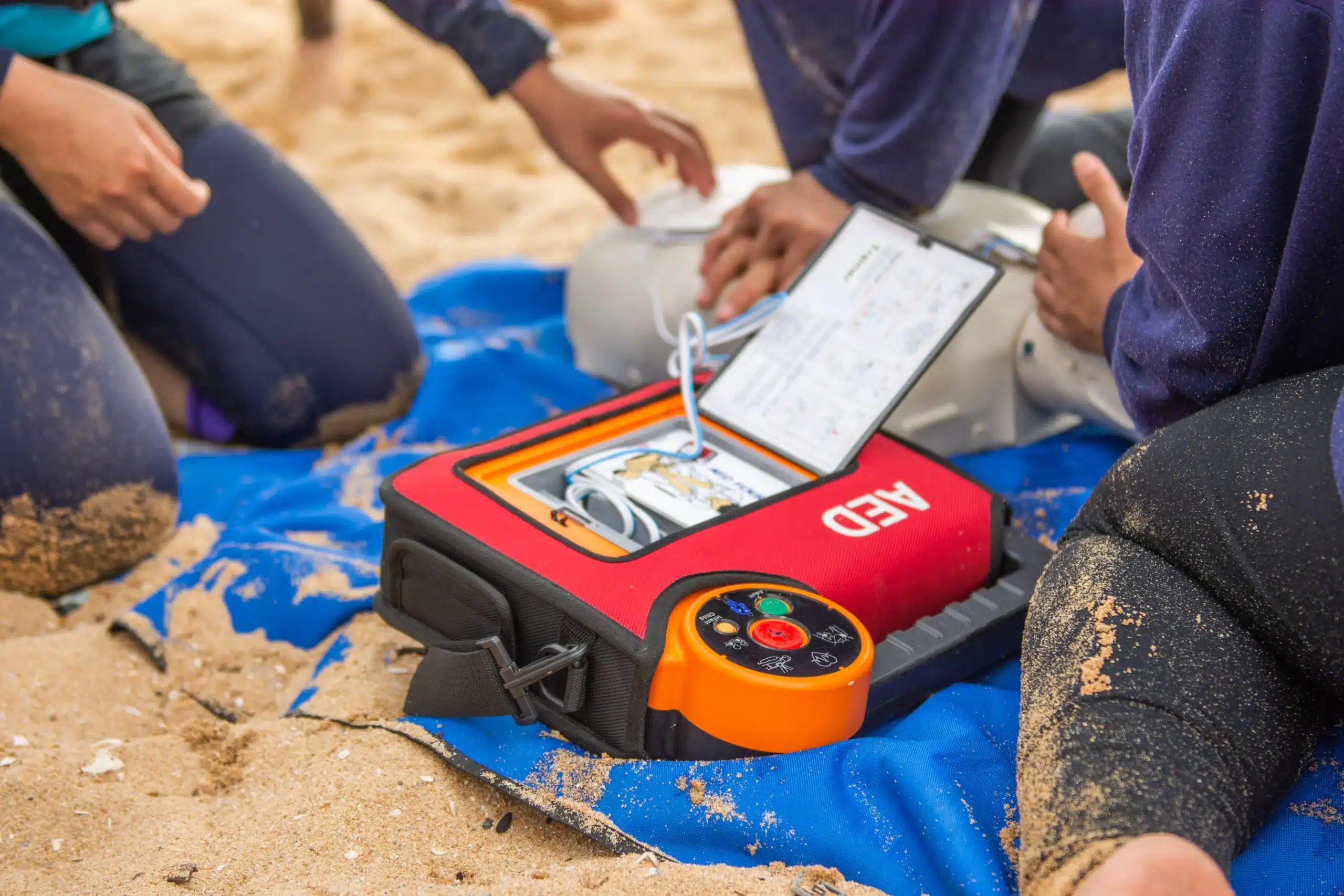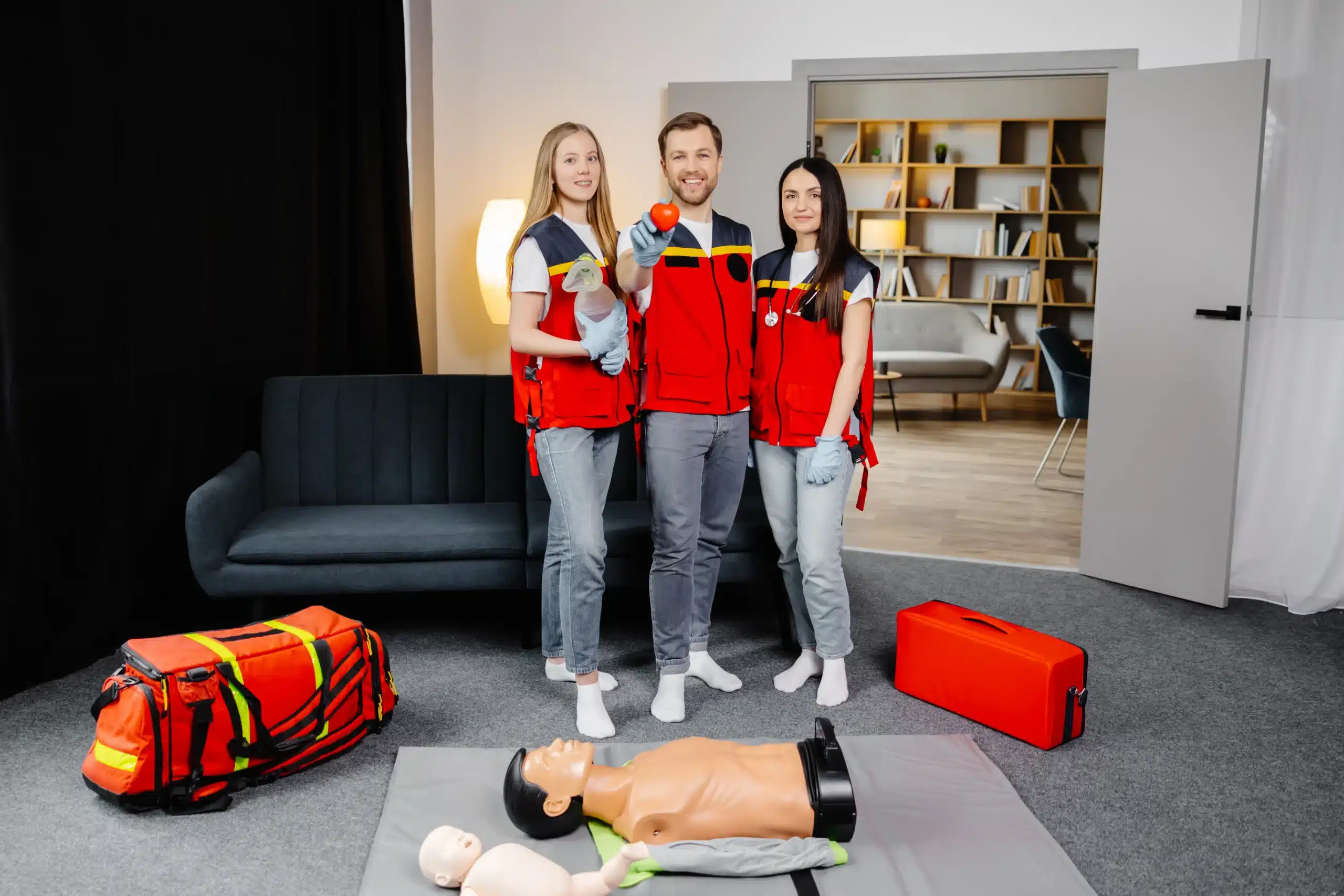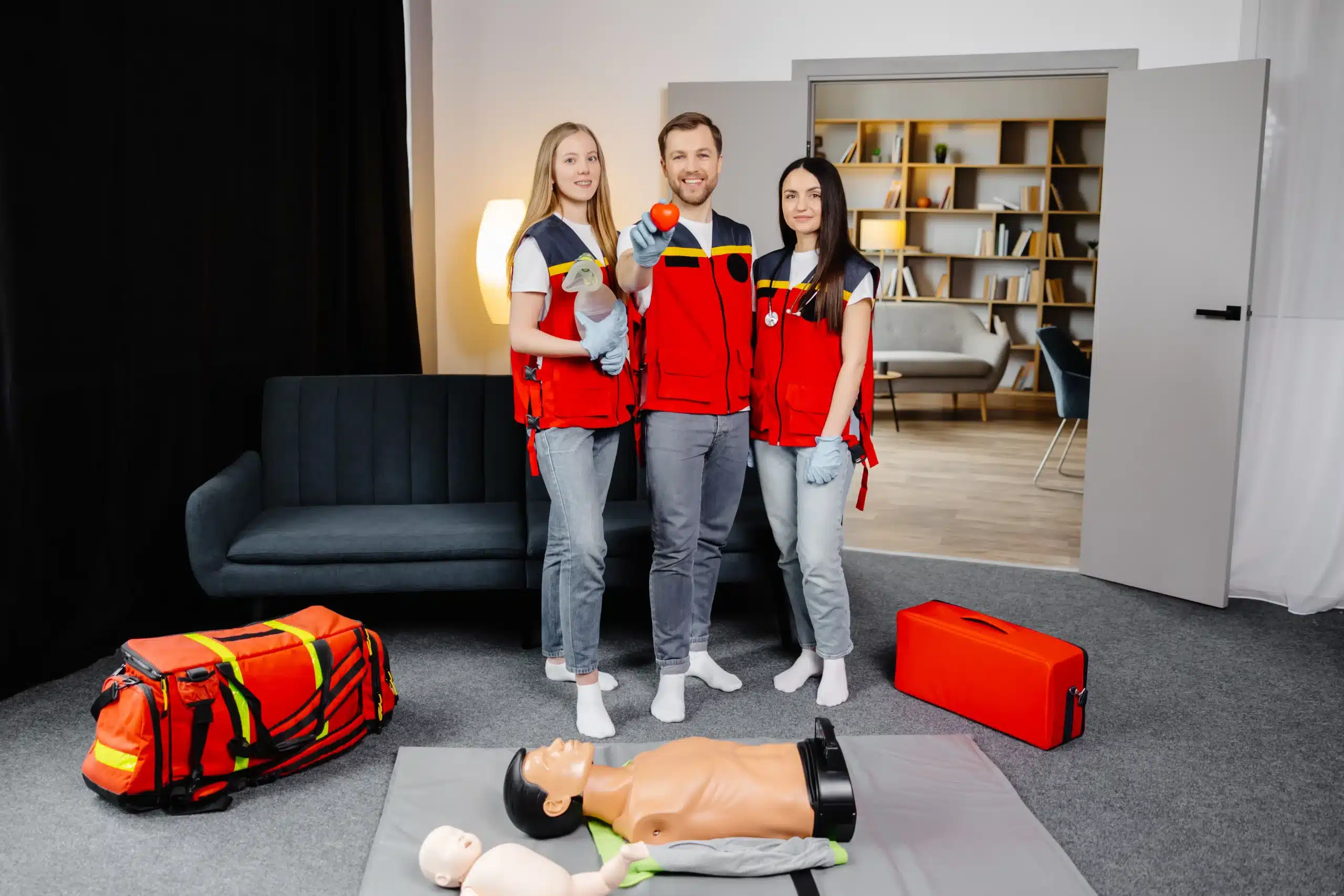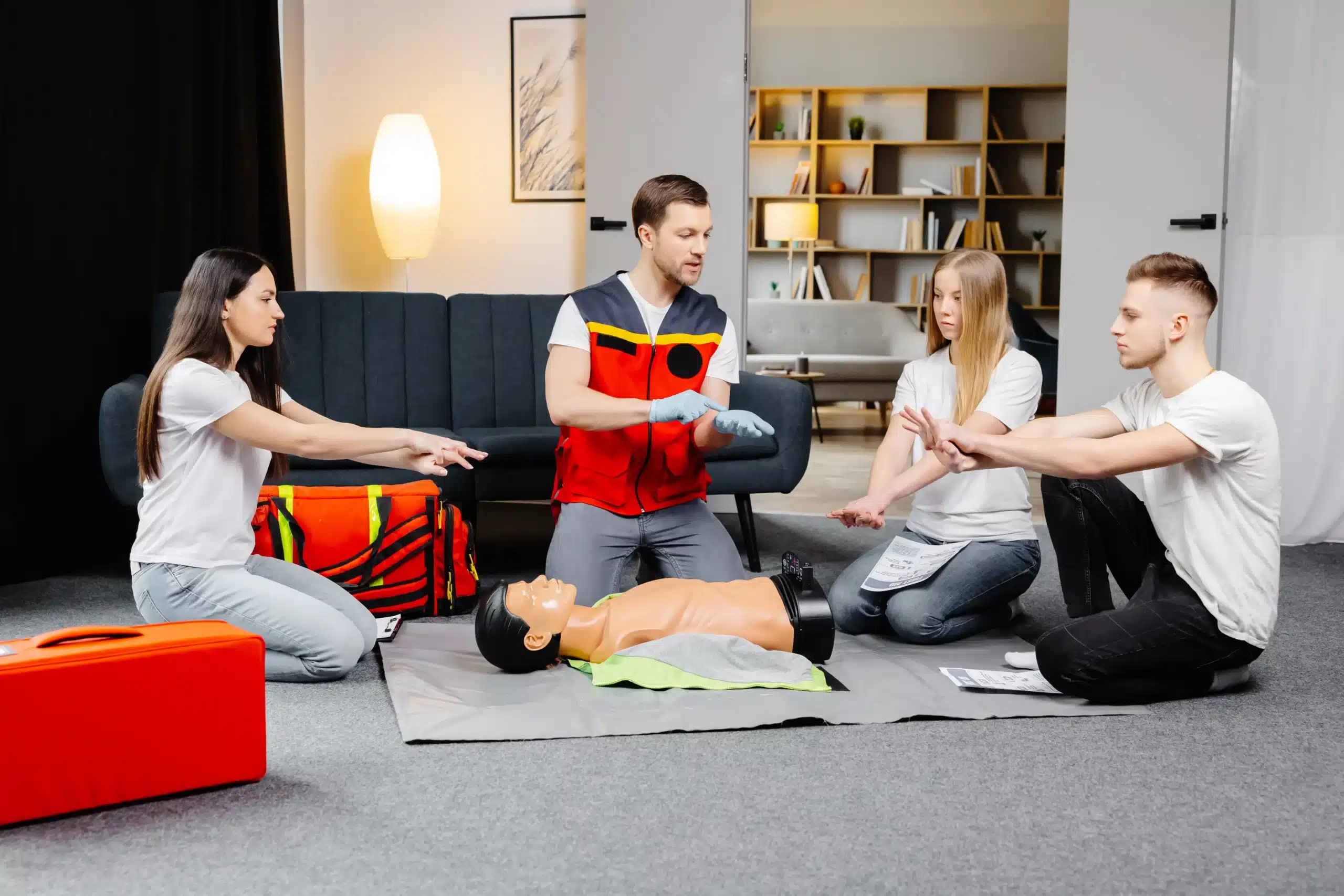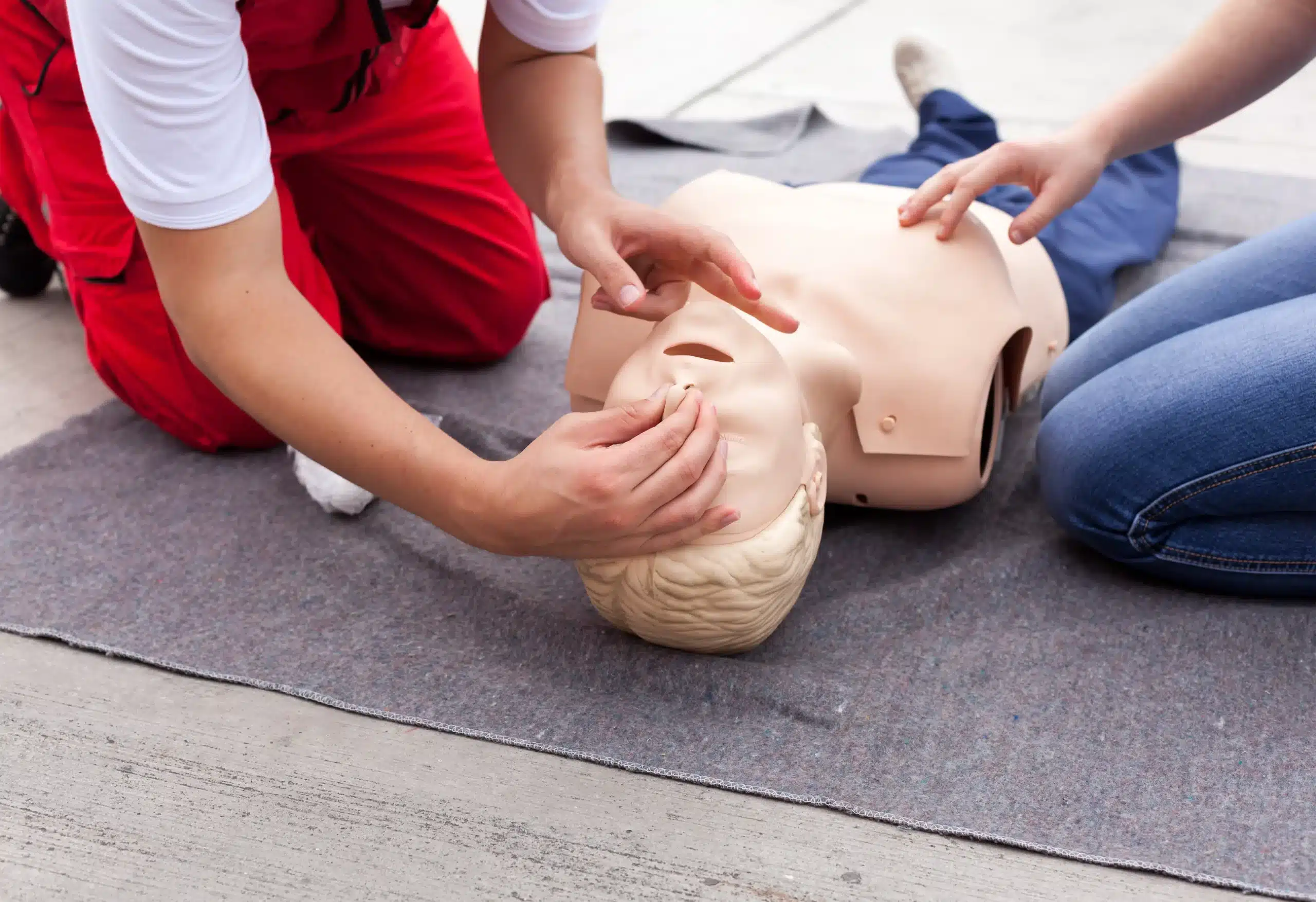Emergencies can happen anytime, anywhere. Would you know what to do if someone near you experienced sudden cardiac arrest? CPR certification equips you with the skills to respond effectively in such critical situations. This guide covers everything from the basics of CPR to finding the right training program for you, including tips on searching for “CPR certification near me.” We’ll explore the different types of CPR classes, the costs involved, and how to choose a reputable provider. We’ll also debunk common myths and address potential challenges, ensuring you have the confidence to act quickly and potentially save a life.
Key Takeaways
- CPR certification empowers you to act: Equipping yourself with CPR training provides the confidence and skills to respond effectively in emergencies, regardless of your profession. Select a recognized certification that aligns with your career goals and learning preferences.
- Find the right training program: Research local and online providers, ensuring their accreditation and alignment with established guidelines. Consider factors like cost, schedule flexibility, and the balance of online and in-person instruction. Seek recommendations from your network or local organizations.
- Maintain your skills and overcome obstacles: Stay current with the latest CPR techniques by renewing your certification regularly. Address any barriers to training, such as cost or time constraints, by exploring flexible options and community resources. Remember, taking action in a crisis is paramount, regardless of your certification status.
What is CPR Certification?
CPR certification signifies that you’ve successfully completed a CPR course and are equipped to perform this life-saving technique. It’s a crucial credential for healthcare professionals and anyone who wants to be prepared for emergencies. Knowing you can effectively respond in a crisis provides invaluable peace of mind.
Types of CPR Classes: In-Person, Online, and Blended
CPR classes are offered in a variety of formats to accommodate different learning styles and schedules. In-person classes provide hands-on training and direct interaction with instructors, allowing for immediate feedback and personalized guidance. Online CPR courses offer flexibility and convenience, enabling you to learn at your own pace from anywhere with an internet connection. Blended learning combines the benefits of both formats, often featuring online instruction followed by an in-person skills session to practice and demonstrate proficiency. The Red Cross offers all three options.
Choose the Right Certification
Before enrolling in a CPR class, it’s essential to confirm which type of certification your employer or regulating body recognizes. Some organizations may prefer certifications from specific providers like the American Heart Association (AHA) or the American Red Cross, while others may accept certifications from a broader range of nationally recognized providers. Also, consider whether your state has specific requirements for CPR training, as some may mandate in-person training components for certain professions. Clarifying these requirements beforehand ensures your training aligns with your professional and regulatory needs. This article offers further insights into online CPR certifications.
Find Reputable CPR Training
Finding the right CPR training involves knowing what to look for and where to search. Whether you prefer a traditional classroom setting or the flexibility of online learning, make sure your chosen provider meets established standards and aligns with your needs.
Research Local Training Centers
Start your search by looking for established training centers in your community. A quick online search for “CPR training near me” can uncover various options. Community centers, hospitals, and dedicated CPR training providers often host regular classes. Reach out to local organizations like schools and community groups, as they may organize CPR workshops or have recommendations for reputable providers. Word-of-mouth referrals from friends, family, or colleagues can also point you toward trusted resources. For those in Napa, American Canyon, or Vallejo, consider checking out Safety Training Seminars for their comprehensive CPR and safety training programs.
Evaluate Online CPR Programs
The convenience of online CPR certification has made learning life-saving skills more accessible. However, it’s crucial to verify the credibility of online programs before enrolling. Check if the program’s certification is accredited and aligns with established guidelines, such as those from the American Heart Association. Look for clear information about the curriculum, instructor qualifications, and the type of certification offered. A reputable online program should provide a way to verify your certification after completion.
Verify Provider Credibility
Before committing to any CPR training, take the time to verify the provider’s credentials. Many providers offer online verification services on their websites, allowing you to quickly confirm the validity of a certification. You can also use third-party websites that specialize in CPR certification verification. This step is especially important if your employer requires CPR certification, as some organizations prefer certifications from specific providers. Verifying your credentials yourself can save time and ensure your certification remains current. Don’t wait for your employer to discover a lapsed certification—take the initiative to stay up-to-date.
CPR Certification: Cost & Value
Getting CPR certified is an investment in yourself and your community. But how much does it cost, and how can you maximize the value of your training? Let’s break it down.
Typical CPR Class Prices
CPR class prices vary depending on the provider, the type of course (basic CPR, BLS for healthcare providers, etc.), and your location. You can find some basic CPR courses for under $100, while more specialized training like the American Heart Association BLS might be a bit more. It’s always a good idea to compare prices from different providers in your area to find the best fit for your budget. Don’t let cost be a barrier—many organizations offer discounts or payment plans to make training accessible. Remember, knowing CPR is invaluable.
Maximize Value and Save
Want to get the most out of your CPR training? Look for classes that offer hands-on practice and realistic scenarios. This will build your confidence and prepare you for a real-life emergency. Also, consider taking a first aid course in addition to CPR—these skills often go hand-in-hand. To save on costs, check with your employer or local community organizations; they may offer free or discounted CPR training. Another tip? Team up with friends or family and register for a class together—some providers offer group discounts.
Certification Renewal
CPR certifications are typically valid for about two years. To stay up-to-date on the latest guidelines and techniques, renew your CPR certification regularly. Renewal courses are usually shorter than initial certification classes and often cost less. Mark your calendar and set reminders so your certification doesn’t lapse. Staying current with your CPR skills ensures you’re always ready to respond effectively in an emergency.
Choose the Right CPR Provider
Picking the right CPR provider is key to getting a good certification. Different organizations have their own standards, and it’s helpful to understand what sets them apart. This will help you choose a provider that aligns with your specific needs and career goals.
Key Differences Between Certifying Bodies
Several respected organizations offer CPR certification. Here’s a quick rundown of their key differences:
- American Heart Association (AHA): The AHA is known for its comprehensive and rigorous training. Their certifications are widely accepted, especially in healthcare settings. They often have slightly higher passing score requirements than other organizations, and certifications are typically valid for two years. If you’re pursuing a career in healthcare, AHA certification might be a good fit.
- American Red Cross: The Red Cross offers a lot of flexibility with online, in-person, and blended learning options. Their certifications are also widely recognized and generally valid for one to two years, depending on the specific course. The Red Cross is a great option if you need a flexible schedule or prefer a specific learning style.
- National CPR Foundation: The National CPR Foundation provides another reputable certification option. Their programs align with national standards and offer a streamlined approach. This can be a good choice if you’re looking for a straightforward, nationally recognized certification.
Local CPR Providers in Napa, CA
If you’re in the Napa area, here are some local providers to consider:
- Safety Training Seminars: Safety Training Seminars offers a range of CPR and first aid courses right here in Napa. They focus on providing excellent customer service and affordable pricing. Check out their offerings for American Heart Association BLS, ACLS, PALS, as well as other courses like EMSA Child Care Health & Safety and RQI classes.
- Other Local Options: You can also explore other local providers or find additional Red Cross and AHA courses by searching online. A quick search will give you contact information and course schedules.
Common CPR Training Myths & Challenges
CPR training equips individuals with essential life-saving skills, but several myths and challenges can create confusion and hinder access. Let’s address these directly to foster a more prepared and confident community.
Debunk CPR Myths
One common myth is that CPR always revives someone experiencing cardiac arrest. While CPR is a crucial intervention that increases the chances of survival, it doesn’t guarantee a successful outcome. CPR buys valuable time until professional medical help arrives, as discussed in this article on CPR misconceptions. Another misconception is that you must be certified to perform CPR. Anyone can and should perform CPR in an emergency. A CPR course offers valuable training and boosts confidence, but it isn’t required to act when someone’s life is in danger. The effectiveness of CPR depends on various factors, including the underlying cause of the cardiac arrest and the speed of intervention.
Overcome Certification Barriers
While certification offers important benefits, some see it as a mandatory requirement to perform CPR. This misconception can prevent people from taking action in emergencies. CPR training aims to equip individuals with the skills and confidence to respond effectively, regardless of their certification status. Common barriers to CPR training include time constraints, course accessibility, and cost. Many providers, including Safety Training Seminars, offer flexible schedules and affordable options to address these challenges and make training more accessible. Consider these tips for finding a program that fits your needs.
Promote CPR Training in Your Community
Creating a community of lifesavers begins with proactive efforts to promote CPR training. Organizing CPR workshops and training sessions in collaboration with local organizations, schools, and community centers raises awareness and equips more people with these essential skills. Partnering with community groups expands the reach of CPR training. Offering free or low-cost CPR training sessions makes this life-saving skill accessible to a wider audience, encouraging greater participation and preparedness. Empowering local groups to organize CPR training workshops fosters a culture of preparedness and strengthens community resilience. Working together builds a network of trained individuals ready to respond effectively in emergencies.
Related Articles
- CPR Certification in Napa: Your Comprehensive Guide – Napa CPR Classes
- Online CPR Classes in American Canyon: Your Guide – Napa CPR Classes
- Your Guide to CPR Training in American Canyon – Napa CPR Classes
- CPR Myths: Debunked 10 Facts Everyone Should Know
- Why CPR Is Important in Healthcare – how it saves lives
Frequently Asked Questions
What’s the difference between online and in-person CPR classes? In-person CPR classes offer hands-on training and direct interaction with an instructor, which is great for immediate feedback. Online courses provide more flexibility, allowing you to learn at your own pace and on your own schedule. Blended learning combines online instruction with an in-person skills session. The best choice depends on your learning style and schedule.
How do I choose the right CPR certification? Check with your employer or any regulating body to see if they require certification from a specific organization like the American Heart Association or the American Red Cross. Also, confirm whether your state has any specific requirements, such as mandatory in-person training components. This ensures your chosen certification aligns with professional and regulatory standards.
How much does CPR certification cost? Costs vary based on the provider, the type of course (basic CPR, BLS, etc.), and your location. Basic CPR courses can sometimes be found for under $100, while more specialized training might be a bit more. Compare prices from different providers and look for potential discounts or payment plans. Your employer or local community organizations may also offer free or discounted training.
How can I find a reputable CPR training provider? For in-person classes, search online for local training centers, check with community organizations, or ask for recommendations. For online programs, verify accreditation and look for clear information about the curriculum, instructor qualifications, and certification type. Always confirm the provider’s credibility, especially if your employer requires certification from a specific organization.
How often do I need to renew my CPR certification? CPR certifications are typically valid for about two years. Renewal courses are usually shorter and less expensive than the initial certification class. It’s essential to renew your certification regularly to stay current with the latest guidelines and techniques, ensuring you’re always prepared to respond effectively in an emergency.
